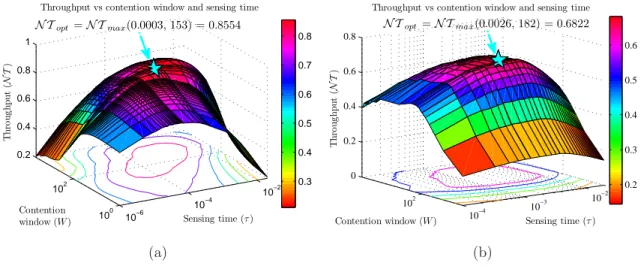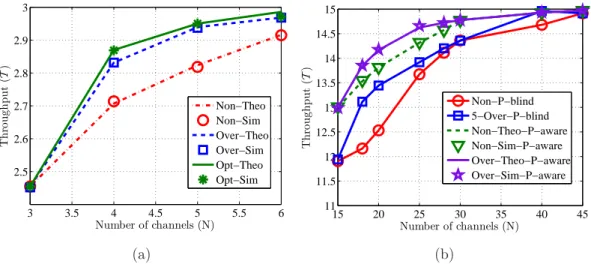Medium Access Control for Dynamic Spectrum Sharing in Cognitive Radio Networks.
Texte intégral
Figure




Documents relatifs
4 relations between variables describing the configuration of gaps and frag- ments are proved in preparation for (1) a 50 % limit law for the relation between the number of
The reduction of intra- and inter-path interference can be measured with the developed performance metrics and the results com- pared to a random channel assignment and the
P ARTIAL C OOPERATION S CHEME (PCS) There are two facts that motivate us to study the partial cooperation scheme: (1) when all SUs know the complete channel availability information
C HANNEL D IVISITION M ULTIPLE A CCESS (C H DMA) Channel division multiple access (ChDMA) is a scheme where each user transmits its own signal through modulated short pulses and
First, we model this problem as a strategic non-cooperative game where operators simultaneously share the spectrum according to the Nash Equilibrium (N.E).. Given a set of
The channel assignment and topology control procedure consists of two mod- ules: the end-to-end throughput estimation and the channel and link selection module.. Support for
Given the rate demands (R j , ∀ j ∈ N (t)) and the set of idle channels M Idle (t), our goal is to compute a feasible channel assignment that assigns channels and transmission powers
In this survey, we have presented various techniques of dynamic spectrum access in cognitive radio networks, starting by auctions where the utility function of the




![Figure 4.2: Example of basic access mechanism for window–based CSMA MAC protocol [3].](https://thumb-eu.123doks.com/thumbv2/123doknet/5392650.125442/90.918.180.727.142.335/figure-example-basic-access-mechanism-window-based-protocol.webp)
![Figure 4.4: Markov chain model for window–based CSMA MAC protocol [3].](https://thumb-eu.123doks.com/thumbv2/123doknet/5392650.125442/91.918.215.718.137.672/figure-markov-chain-model-window-based-csma-protocol.webp)